Assessing the Viability of Solar Battery Energy Storage in Australia: Overcoming Technical, Economic, and Implementation Obstacles.
Over the last five years, home batteries have seen significant advancements in technology, efficiency, and affordability. With more and more homeowners looking for sustainable energy solutions in addition to already installed PV (solar panels), home batteries have become an attractive option for reducing reliance on the grid and lowering electricity bills in the light of falling electricity import price. One major trend has been the integration of home batteries with solar panel systems, allowing homeowners to store excess energy generated during the day for use at night. The cost of home batteries has initially decreased, making them more accessible to a wider range of homeowners, but remained stubborn since 2018. As the demand for sustainable energy solutions continues to grow, the development and innovation of home batteries is expected to continue.
The main challenge homeowners are facing at the moment is relatively high cost of Solar Battery Energy Storage, with numbers ranging between AU$1300-$1500 per KW/h, installed.
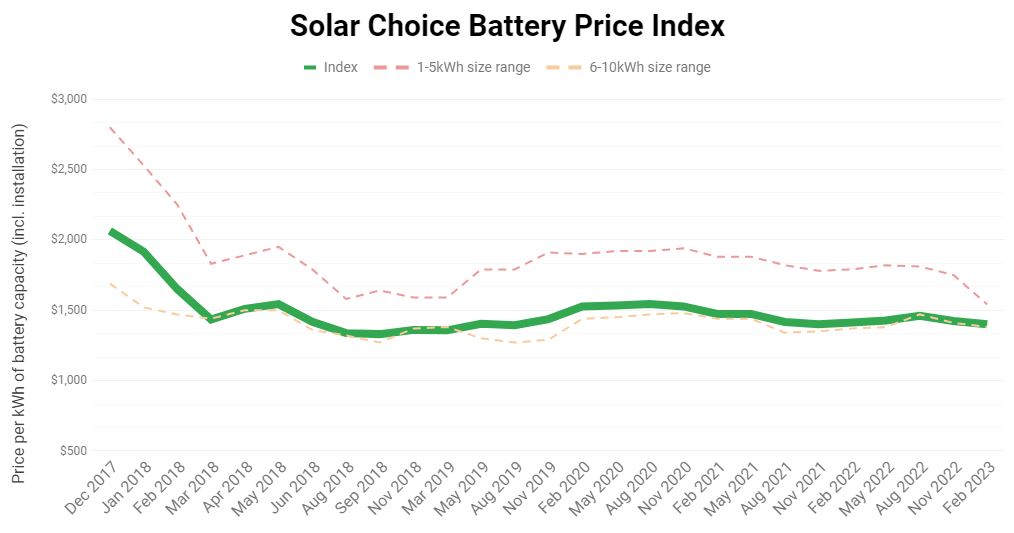
The ROI, case for Sydney
SunWiz created a chart for Sydney that shows the potential savings based on the size of the battery used. For instance, a 12KW/h battery could save up to AU$1800 according to SunWiz. Installing a Tesla PowerWall2 battery cost around AU$16,000, and with this investment, the ROI could be around 10% (meaning it would take 10 years to pay off the investment) after accounting for battery degradation and excluding the cost of funds (such as the interest that money could have earned during that time).

Battery size
As per chart above, an average Sydney household will yield highest ROI with smallest battery possible. On the flip side, small 4Kw/h battery will not offer much of the power backup function during power outage, and will be cycled the hardest resulting in faster degradation of the cells.
There is more to ROI, Time Of Use (TOU) anyone?
Someone somewhere in Australia thought is was a good idea: Lets connect end user direct to the electricity Grid, bypassing electrical retailers. Amber Electric was born. In the nutshell, electricity providers charge you average price over one year, but purchase on spot market, where prices fluctuate every 5 minutes. For privilege of having fixed predictable contract price, you pay fee per KW/h to electricity retailers.
Amber Electric allow direct connection to the grid and it’s optional battery control module is now available. Here is snippet how price of electricity actually looks like on wholesale market:
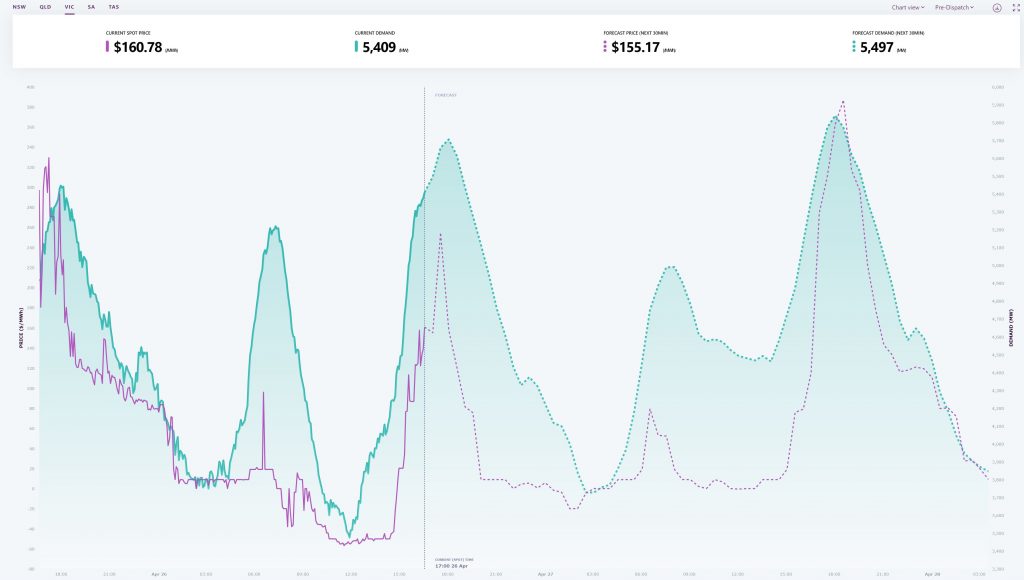
Look closely, midday price for electricity is actually negative. You consume electricity and get paid for offering additional load for the grid stability. But evening and morning price is very high, up to ten times your average AU$0.35c KW/h from retailer.
This is where Amber Electric make case. They get access to your meter, battery, inverter and try to re-balance your load on the grid. If it works well, you charge batteries from Solar and Grid during mid-day and use it during peak prices. Also, if battery capacity is sufficient, sell some back to the grid when prices are high. You can get paid premium for your export. Now this is interesting as this impact our ROI model. It has the potential to improve Return on Investment to some 20% or 5 years payback, versus 10 years.
There are alternatives to Amber smart battery control option: NED and Charge HQ.
Looking at available Solar Battery’s
Below is a excellent summary done by Clean Energy Reviews for DC batteries. We skip AC batteries option due to much higher cost option.

Although Growatt’s reported price of approximately AU$600 per KW/h for solar batteries appeared appealing as the most cost-effective option, we have been unable to find prices that come close to this figure. Instead, we have received quotes from resellers and installers ranging around AU$1000 per KW/h for Growatt and other solar batteries. Due to the significantly higher prices quoted by resellers and installers compared to the prices indicated in the report, we have chosen to directly approach battery manufacturers in China in order to improve pricing.
Looking for Battery Supplier
Our objective is to identify a reliable and cost-effective battery for our testing that can be retrofitted to Australian households that have already invested in solar panels. We found that most major brands source their lithium battery cells from China, with the largest and most advanced battery cell manufacturers being BYD and CATL, who account for over 45% of the world’s total output. To go straight to the source, we conducted extensive research and visited China’s manufacturing facilities. As a result, we have identified the most suitable candidate, PA Solar Battery Storage, which utilizes both BYD and CATL batteries and manufactures its own Energy Storage Systems or solar home batteries.
PA International, based in Shenzhen, China, uses battery cells from BYD and CATL, depending on the battery model and purpose. They manufacture solar batteries using their proprietary BMS (Battery Management System) and advanced communication modules that enable the battery to communicate with more than 30 different inverter brands. This feature makes it one of the most versatile DC battery banks available on the market. Additionally, by working directly with the manufacturer, we have access to technical support and can save 50% in costs. This has the potential to bring our project’s ROI (Return on Investment) to under 3-4 years, which is a significant advantage.

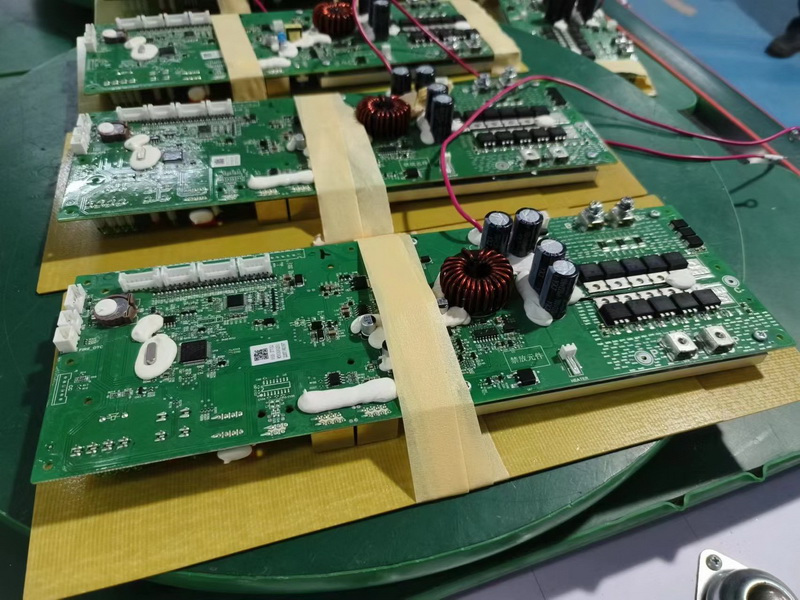

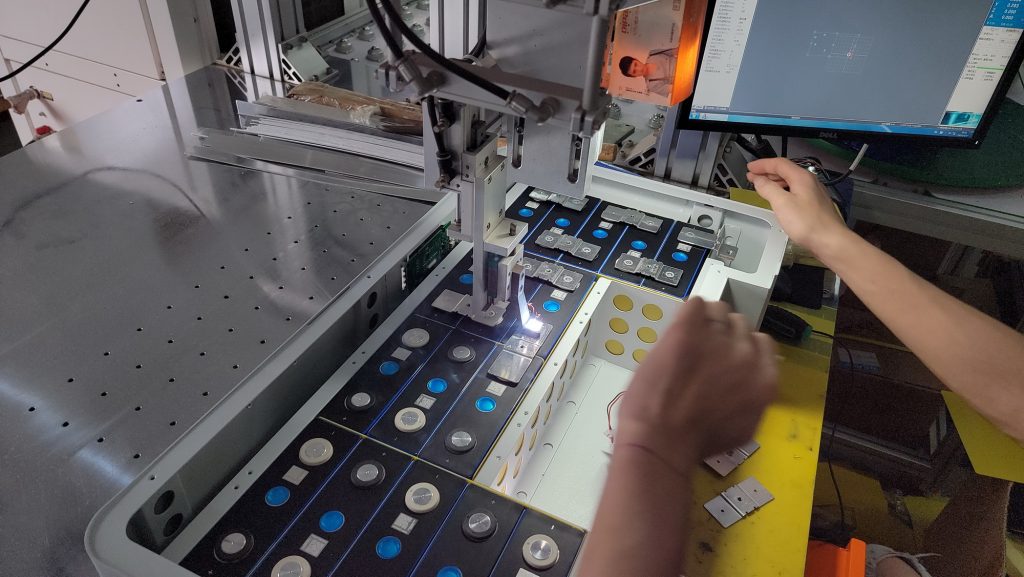
Solar Battery Storage system configuration
For the trials we have chosen 105KW/h battery aka ESS, consisting of 3 separate 35KW/h power banks. Each will be linked to separate DEYE SUN-6K-SG03LP1 inverter also known as SunSink in USA and African markets. The goal is to have whole system working in UPS mode. Growatt inverters as many others do not allow UPS output to be paralleled. Limiting your system max UPS output “LOAD” to just one inverter output. Our configuration referred as “hybrid”. It operates as Uninterrupted Power Supply with 3 x 6KW inverters work in unison, it offer instantaneous (50mS) power back up in case of grid failure. It also allow advanced power management, where electricity flow between PV, Battery, Grid, Off Grid Load and OnGrid Load can be adjusted to suite momentary system requirement.

Below you can find specification of the actual battery modules and possible configurations. Note that this specific model max out at 16P (16 parallel modules). This puts a limit on 16 modules per one inverter, resulting at maximum of 80KW/h per inverter. We opted for 3 separate inverters for this trial, limiting possible future expansion to 240KW/h.
Each 5KW module can output at 1C, offering you full 5KW for one hour. So a stack of 7 modules have a maximum power output of 35KW. Since we use 6KW inverter, we would be limited by inverter capacity.
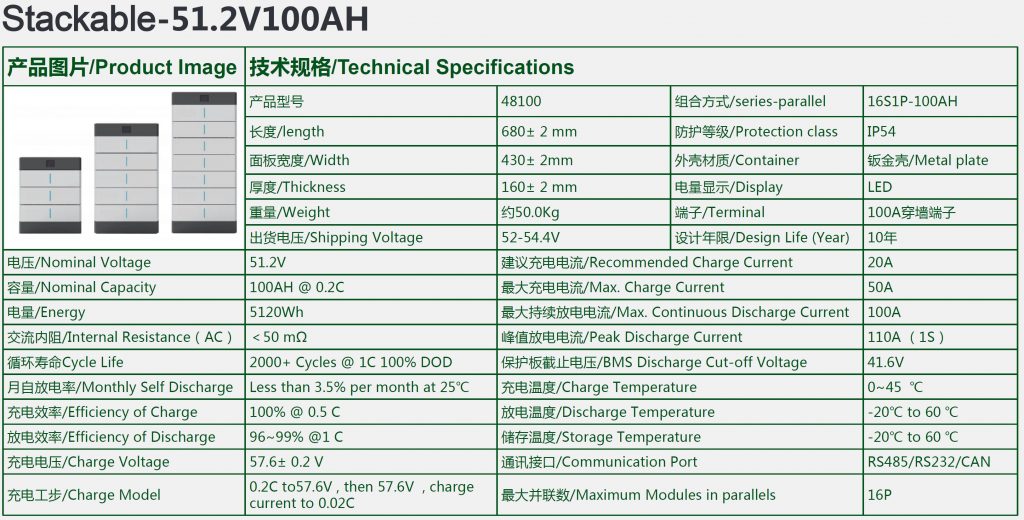
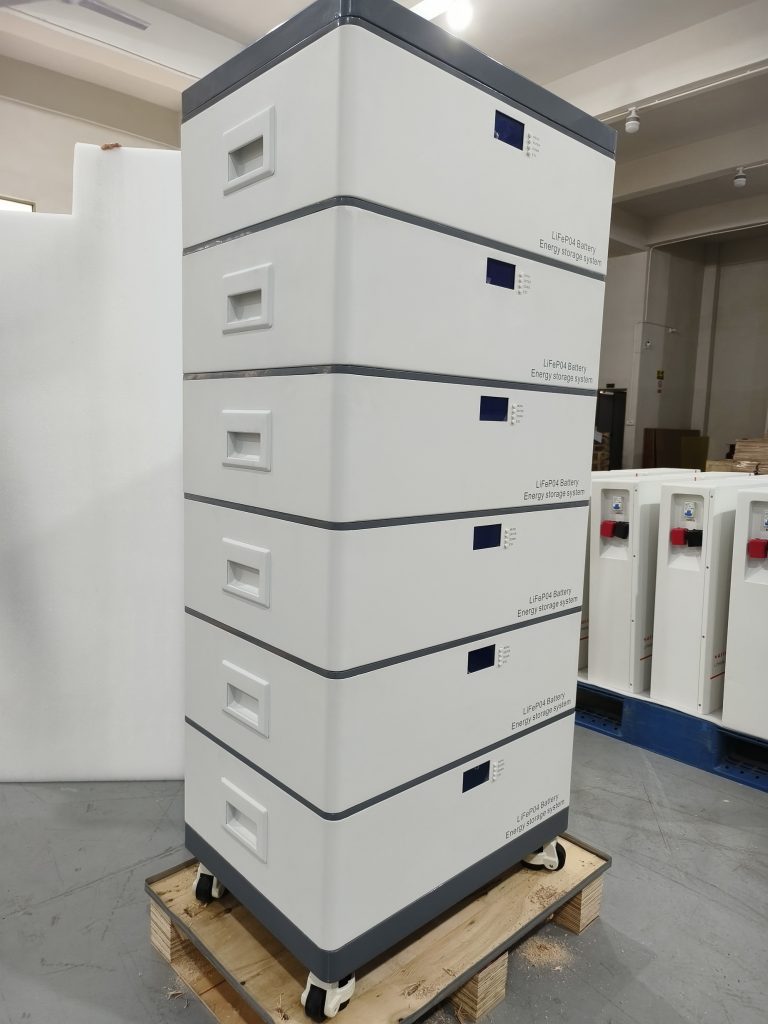
Estimating lifespan of the LiFePo Solar battery
Our battery pack was built using EVE LiFePo battery cells. These specific cells have two major factors affecting it’s lifespan: Temperature and Charge/Discharge rate. If operating temprature can be maintained in the range of 20-30 Celsius, the expected lifespan at 0.5C charge/discharge rate is about 5000 cycles. Our battery stack is designed to 35KWh with maximum charge/discharge rate of 6KW, that would represent a load of just under 0.2C. This will promote battery low operating temperature due to low current draw and extension of it’s lifespan to low 0.2C load, expected life to be well over 8000 cycles. This represent over 20 years, if cycled daily, until it reached capacity of 80% from listed specification.
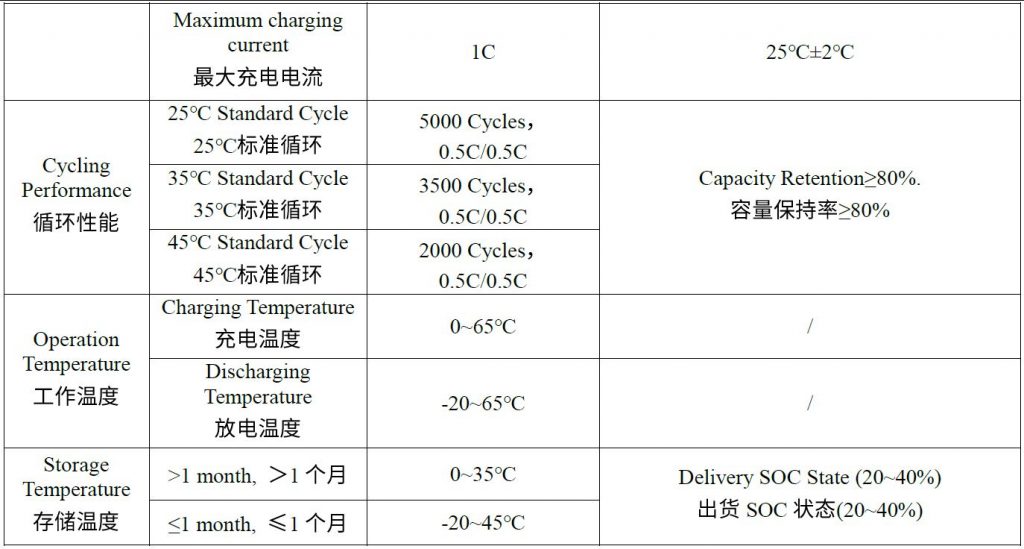
Conclusion of China made Solar Battery Storage System
It is clear that way forward is for households to have “Home Battery” to supplement PV system. You can purchase Tesla POWERWALL or the similar in quality and performance system sourced direct from Chinese manufacturer that cost less and deliver great performance.
PA International Solar Battery System impressions:
| Pros | Cons |
| – A lot less expensive | – Warranty only 24 months |
| – High end battery cells | – No local representative / installer |
| – Good build quality | – Not as tidy as POWERWALL 2 |
| – Scalable and customisable | – Some inverters not suitable |
Read more about how system was installed, configured and performed.
We have build and operated the system for some time now, focusing on Tariff Arbitrage in Australian grid. There are some very interesting findings, click the link to the next article: Tariff Arbitrage in Australian grid